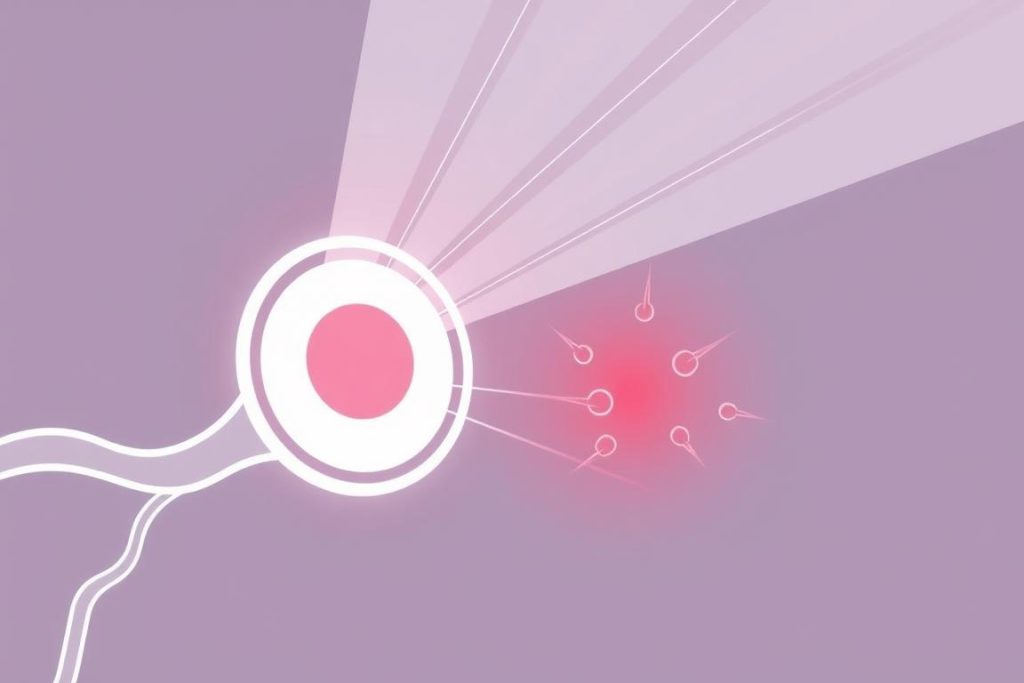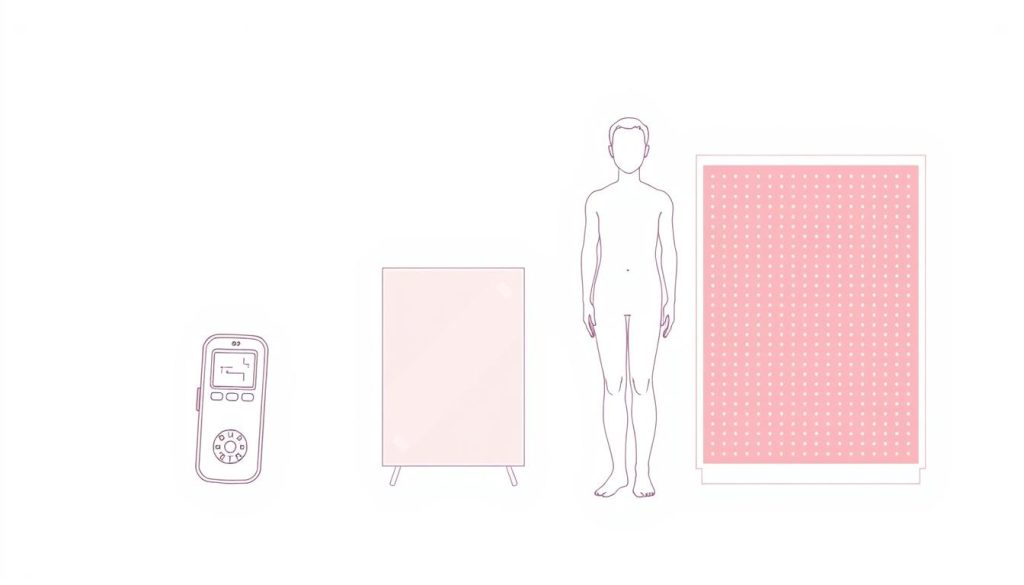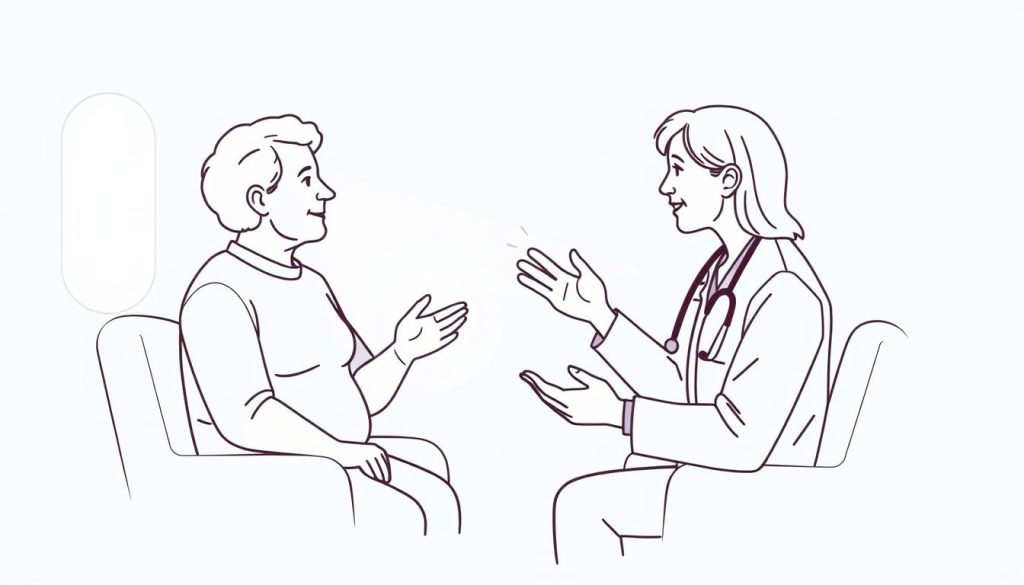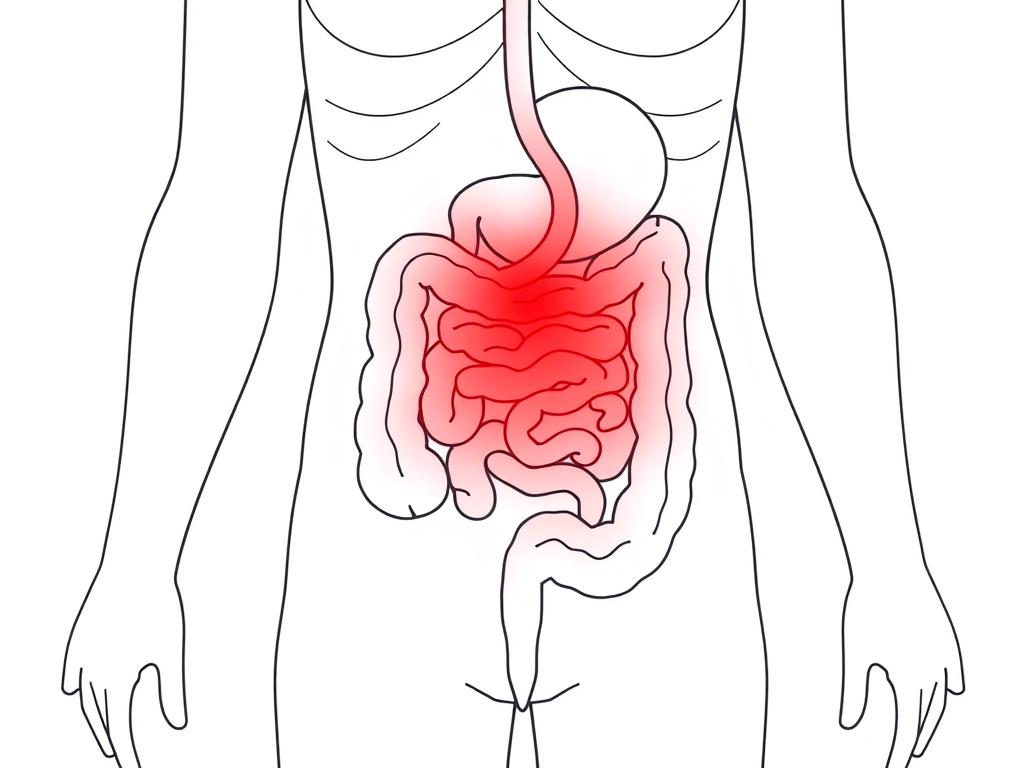Chronic constipation affects approximately 16% of adults worldwide and up to 33% of adults over age 60, according to the National Institutes of Health. For many sufferers, conventional treatments provide only temporary relief or come with unwanted side effects. Red light therapy (RLT) has emerged as a promising non-invasive option for improving digestive function and relieving constipation through its effects on cellular energy, inflammation, and gut motility.
This guide explores the science behind red light therapy for constipation, examining clinical evidence, optimal treatment protocols, and how to select an effective device for digestive health support. As research continues to evolve in this area, we’ll separate fact from fiction to help you make informed decisions about this emerging treatment option.
Understanding Constipation: Causes and Impact
Constipation is characterized by infrequent bowel movements (typically fewer than three per week), difficulty passing stool, or the sensation of incomplete evacuation. While occasional constipation is common, chronic constipation can significantly impact quality of life and may signal underlying health issues.
Common Causes of Constipation
- Insufficient dietary fiber
- Inadequate fluid intake
- Sedentary lifestyle
- Ignoring the urge to defecate
- Certain medications (opioids, antidepressants)
- Neurological conditions
- Hormonal imbalances (hypothyroidism)
- Structural abnormalities
- Gut microbiome imbalances
- Chronic stress and anxiety
Conventional treatments typically include lifestyle modifications, fiber supplements, stool softeners, and laxatives. However, these approaches don’t address the underlying cellular and neuromuscular mechanisms that may contribute to chronic constipation. This is where red light therapy offers a different approach by targeting cellular function and tissue health directly.
The Science Behind Red Light Therapy for Digestive Health
Red light therapy, also known as photobiomodulation (PBM), uses specific wavelengths of red and near-infrared light to stimulate cellular function. When applied to the abdominal area, these wavelengths can penetrate through skin and tissue to reach the digestive organs.
How Red Light Therapy Affects Digestive Function
Mitochondrial Stimulation
Red and near-infrared light (particularly at 660nm and 850nm wavelengths) stimulates the mitochondria in cells, increasing production of ATP (cellular energy). This provides more energy for proper digestive muscle contractions and cellular repair processes.
Reduced Inflammation
Clinical studies show that red light therapy reduces inflammatory markers and oxidative stress in tissues. This anti-inflammatory effect can help soothe irritated intestinal tissue and improve overall gut function.
Enhanced Blood Flow
Red light therapy stimulates the release of nitric oxide, which dilates blood vessels and improves circulation. Better blood flow to the digestive organs means improved oxygen and nutrient delivery, supporting optimal function.

Key Mechanisms for Constipation Relief
Research suggests that red light therapy may help relieve constipation through several specific mechanisms:
- Improved gut motility – Enhanced cellular energy supports proper intestinal muscle contractions
- Reduced intestinal inflammation – Less inflammation means better function and less discomfort
- Enhanced gut-brain axis signaling – Improved neural communication between the brain and digestive system
- Gut microbiome support – Emerging research suggests RLT may positively influence gut bacteria balance
- Stress reduction – RLT may help regulate stress responses that affect digestive function
- Tissue regeneration – Support for healing and maintaining healthy intestinal tissue
Clinical Evidence: Does Red Light Therapy Work for Constipation?
While research specifically on red light therapy for constipation is still emerging, several human clinical studies provide promising evidence for its effectiveness in improving digestive function.
Key Clinical Studies
Study 1: Sacral Photobiomodulation for Chronic Constipation
A 2019 study by Liebert et al. examined the effects of low-level laser therapy (LLLT) on patients with chronic constipation. Researchers found that even a single session of sacral photobiomodulation significantly influenced the autonomic nervous system, particularly affecting the sacral defecation center that controls bowel movements.
After eight treatment sessions, a patient with a five-year history of chronic constipation who couldn’t manage spontaneous bowel movements experienced regular bowel habits and improved quality of life.
Study 2: Laser Acupuncture vs. Lactulose for Pediatric Constipation
A randomized controlled trial by El-Deeb et al. (2018) compared laser acupuncture therapy to lactulose (a common laxative) in children with functional chronic constipation. Both treatments were supplemented with behavioral therapy and dietary modifications.
After four weeks, both groups showed significant improvement in bowel movement frequency and stool consistency, but the laser acupuncture group demonstrated marginally greater improvement than the lactulose group.
Study 3: Photobiomodulation and Gut Microbiome
A 2021 study by de Freitas et al. investigated how photobiomodulation affects the gut microbiome. The researchers found that near-infrared light therapy positively influenced gut bacteria populations, with one study showing a remarkable 10,000-fold increase in the ratio of beneficial bacteria following treatment.
Research Limitations: While these studies show promising results, it’s important to note that research specifically on red light therapy for constipation is still developing. Most studies have small sample sizes and varying protocols. More large-scale clinical trials are needed to establish optimal treatment parameters.
Choosing the Right Red Light Therapy Device for Constipation
When selecting a red light therapy device for digestive health, several key factors determine effectiveness and value. The right combination of wavelengths, power output, treatment area size, and quality construction makes a significant difference in results.
Essential Features for Digestive Health Support
Optimal Wavelengths
Look for devices that deliver both red light (630-660nm) and near-infrared light (830-850nm). This combination provides both surface-level and deep-tissue benefits. Some advanced devices also include 1064nm wavelengths for maximum depth penetration.
Adequate Power Output
Effective irradiance (power density) should be at least 30mW/cm² at the recommended treatment distance. Lower power means longer treatment times or reduced effectiveness.
Treatment Area Size
For abdominal applications, larger panels covering the entire digestive area are more efficient. Smaller devices can work but require multiple positioning and longer sessions.

Recommended Devices for Digestive Health
Based on the clinical evidence and optimal specifications, these devices offer effective options for addressing constipation with red light therapy:
Total Spectrum Compact (7 Wave 216 LEDs)
The Total Spectrum Compact from RLT Home offers an ideal balance of coverage area and power for abdominal applications. At 30 inches × 12 inches with 216 LEDs, it efficiently covers the entire digestive area. Its seven clinically-validated wavelengths (including 630nm, 660nm, 830nm, and 850nm) provide comprehensive benefits for digestive health.
The pre-built “Neuro” mode specifically targets the gut-brain axis, which is crucial for proper digestive function. With zero measurable EMF at treatment distance and minimal flicker, it’s designed for safe, regular use.
PlatinumLED BioMax
PlatinumLED’s BioMax series offers excellent irradiance levels, allowing for shorter treatment sessions. Their high power output is particularly beneficial for those with limited time for therapy sessions.
Joovv Solo
Joovv’s modular design allows for flexible placement and expansion over time. Their sleek, modern aesthetic and user-friendly controls make them particularly accessible for beginners.
For those seeking full-body treatment that includes digestive benefits, the Total Spectrum Ultra with its 480 LEDs and motorized stand allows for comfortable lying treatments. The three programmable height presets make it easy to maintain optimal treatment distance for abdominal applications.
Practical Guidance: Using Red Light Therapy for Constipation
Effective red light therapy for constipation requires proper technique, consistency, and complementary approaches. Follow these guidelines to maximize benefits and safety.
Optimal Treatment Protocol
- Frequency: Start with 3-5 sessions per week, allowing at least 24 hours between treatments
- Duration: 10-15 minutes per session
- Distance: Position the device 6-12 inches from your abdomen
- Time of day: Preferably 1-2 hours after eating, when digestive activity is high
- Body position: Lying down or seated comfortably with the abdomen exposed
- Consistency: Results typically require 2-4 weeks of regular use
Safety Note: While red light therapy is generally considered safe, consult your healthcare provider before beginning treatment, especially if you have a digestive disorder, are pregnant, have active cancer, or take photosensitizing medications.
Complementary Approaches for Enhanced Results
Red light therapy works best as part of a comprehensive approach to digestive health. Consider these complementary strategies:
Dietary Support
- Increase fiber intake gradually (25-30g daily)
- Stay well-hydrated (2-3 liters of water daily)
- Include fermented foods for probiotic benefits
- Minimize processed foods and artificial additives
Lifestyle Adjustments
- Regular physical activity (30+ minutes daily)
- Stress management techniques (meditation, deep breathing)
- Establish a regular bathroom routine
- Proper toilet posture (using a footstool)
Gut-Brain Support
- Vagus nerve stimulation exercises
- Adequate sleep (7-9 hours nightly)
- Mindful eating practices
- Abdominal self-massage techniques
Tracking Progress and Adjusting Treatment
Monitoring your response to red light therapy helps optimize results and determine if adjustments are needed. Keep track of these key indicators:
Signs of Improvement to Monitor
- Increased bowel movement frequency
- Improved stool consistency
- Reduced straining during defecation
- Decreased bloating and abdominal discomfort
- Enhanced feeling of complete evacuation
- Reduced dependence on laxatives
- Improved energy levels
- Better overall digestive comfort
When to Adjust Your Protocol
If you don’t notice improvements after 2-3 weeks of consistent use, consider these adjustments:
- Increase session frequency (up to once daily)
- Extend session duration (up to 20 minutes)
- Adjust device positioning to target different areas of the abdomen
- Try different times of day (morning vs. evening)
- Combine with gentle abdominal massage before or after treatment
![]()
Frequently Asked Questions About Red Light Therapy for Constipation
How long does it take to see results from red light therapy for constipation?
Most people begin noticing improvements within 2-4 weeks of regular use (3-5 sessions weekly). However, individual responses vary based on the severity and underlying causes of constipation. Consistency is key—occasional use is unlikely to produce significant results.
Can red light therapy replace medications for constipation?
Red light therapy should be viewed as a complementary approach rather than a replacement for medical treatment. Always consult your healthcare provider before discontinuing prescribed medications. For some individuals, red light therapy may reduce dependence on laxatives over time, but this should be monitored by a healthcare professional.
Is red light therapy safe for all types of constipation?
Red light therapy is generally considered safe for functional constipation (constipation without an identifiable medical cause). However, if your constipation is due to bowel obstruction, inflammatory bowel disease, or other serious medical conditions, consult your doctor before trying red light therapy. It’s particularly important to get proper medical evaluation for any sudden change in bowel habits.
Can I use a small handheld red light device for constipation?
While small handheld devices can provide some benefit, they typically have limited coverage area and power output. For digestive applications, larger panels that can cover the entire abdominal area are generally more effective and efficient. If using a small device, you’ll need to move it to multiple positions and potentially extend treatment time.

Conclusion: Is Red Light Therapy Worth Trying for Constipation?
Red light therapy represents a promising non-invasive approach for supporting digestive health and potentially relieving constipation. While research specifically targeting constipation is still emerging, the existing clinical evidence on red light therapy’s effects on cellular energy production, inflammation reduction, and tissue healing provides a reasonable scientific basis for its application to digestive issues.
For those struggling with chronic constipation who haven’t found complete relief from conventional approaches, red light therapy offers a complementary option with minimal risk of side effects. The key to success lies in selecting a high-quality device with appropriate specifications, following a consistent treatment protocol, and combining therapy with supportive dietary and lifestyle practices.
Devices like the Total Spectrum Compact and Ultra from RLT Home provide the optimal wavelength combinations, power output, and treatment area coverage for digestive applications, while their zero-EMF design ensures safety for regular use. As with any health intervention, individual results may vary, and patience is essential—meaningful improvements typically require several weeks of consistent application.
Ready to explore red light therapy for digestive health?
Compare the specifications, features, and pricing of leading red light therapy panels to find the option that best fits your needs and budget.
— David, independent RLT researcher

